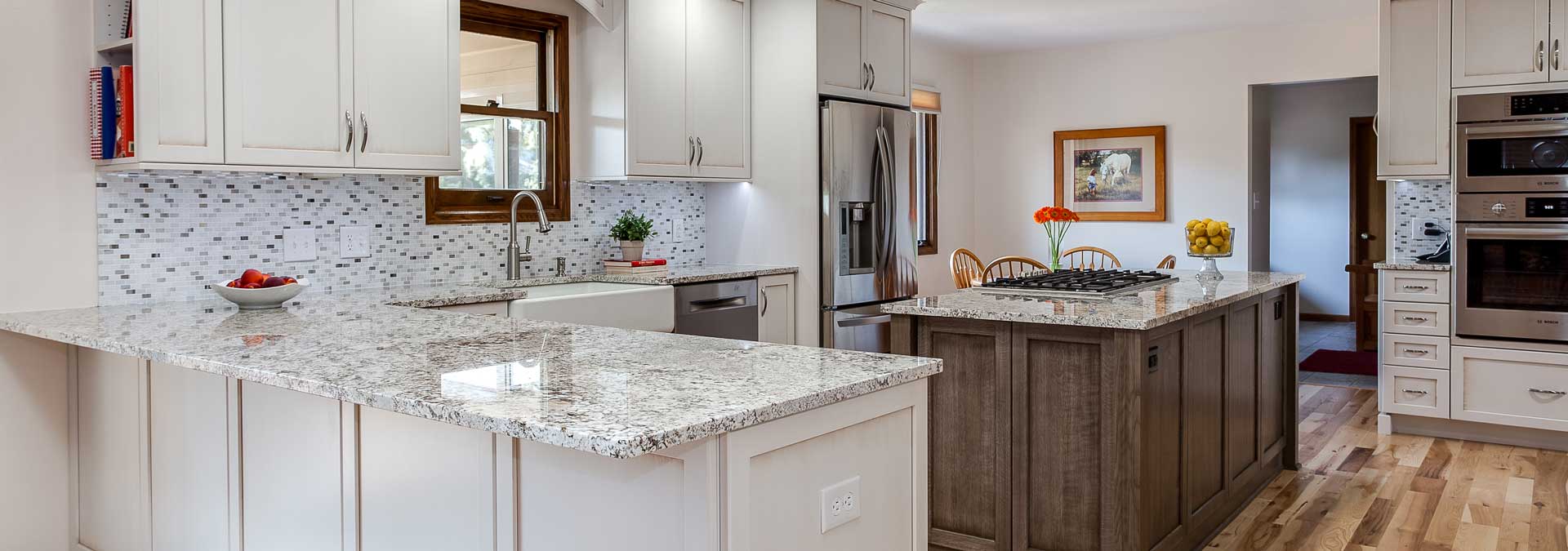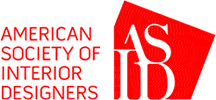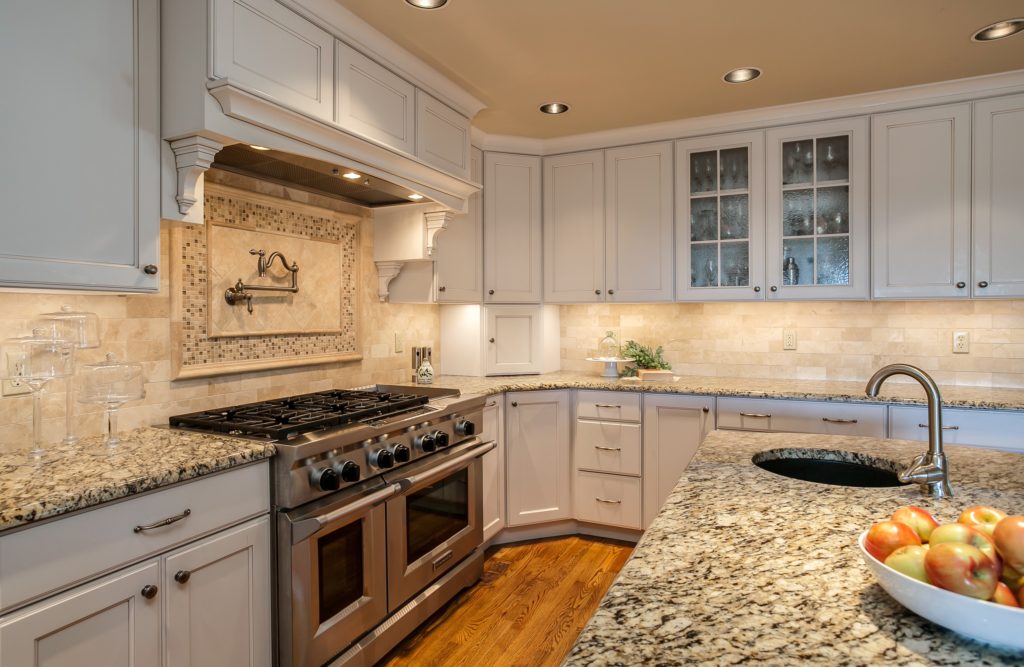
Range hoods serve two vital purposes for homeowners in Denver Colorado looking to create a dream kitchen.
One is functional, and the other is aesthetic.
Range hoods help eliminate cooking odors and grease from wall and window coverings, art, fabric, upholstery and other materials in your kitchen and adjoining spaces. With few exceptions, range hoods extend the useful life and enjoyment of your kitchen and surrounding rooms. Range hoods are particularly valuable in open-concept kitchens by protecting materials in the kitchen and the surrounding spaces. It’s generally best to turn the fan on before cooking to help assure odors do not permeate other parts of your kitchen or home.
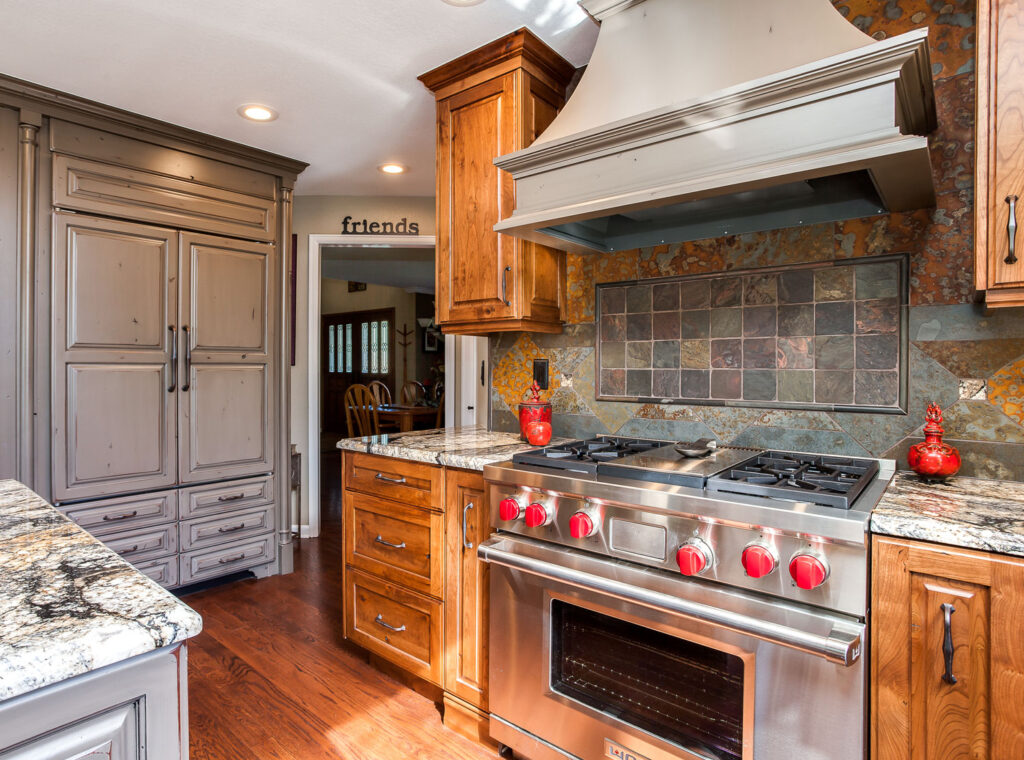
Range Hood Performance
A range hood’s ability to remove odors and grease is determined by the power level of the fan in the hood. The amount of power needed depends on the amount of energy produced by the cooktop measured in British Thermal Units (BTU). Fan performance is based on the cubic feet per minute (cfm) of air that it moves. The rule of thumb is to specify a hood fan that can move 1 cfm of air for every 100 BTUs of energy produced by the cooktop. If you purchase a professional-grade cooktop or range with a burner that generates 100,000 BTUs, we would specify for your high-performing kitchen a range hood fan that can more 1000 cfm.
Certain rules of thumb don’t always apply. That’s why it is important to consider how often you cook and the performance characteristics of the range you select to ensure that the fan will do its job effectively. If your cooktop or range includes a grill, you will need a fan that can move more than 1 cfm per 100 BTUs of energy because grilling produces lots of smoke both indoors and outdoors. We typically recommend more powerful fans for cooktops with grills or other features that generate smoke, grease or char. We also recommend hoods and fans that are wider than the cooktop for clients who specify high-performing cooktops and ranges.
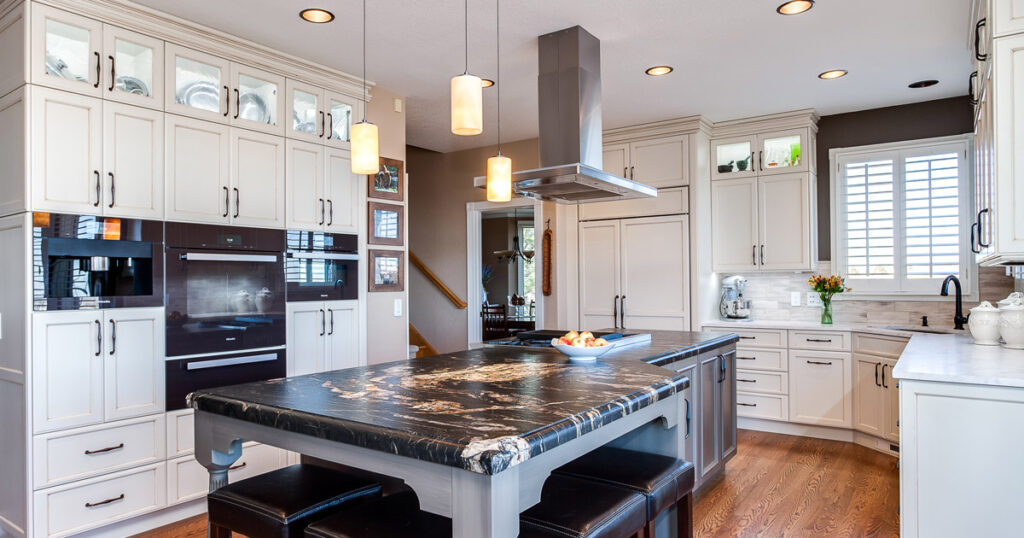
Range Hood Positioning
The positioning of the range hood is influenced by the power of the range. The hood usually is between 24 and 34 inches above the range. Ductwork position is another factor to consider when selecting a range hood. It’s best to vent the hood through a straight vertical run of ductwork. However, that is not always possible if you want to position your range below a bend in the ductwork. That will lower the efficiency of the fan and may require a more powerful motor.
Noise during operation is another consideration. The more powerful the fan, the noisier it is likely to be. That’s why it is essential to hear fans operate before buying. Mounting the fan or blower outside of the home is an option that can reduce operating noise by as much as 40%, but that installation technique tends to be more complicated and can add to the budget.
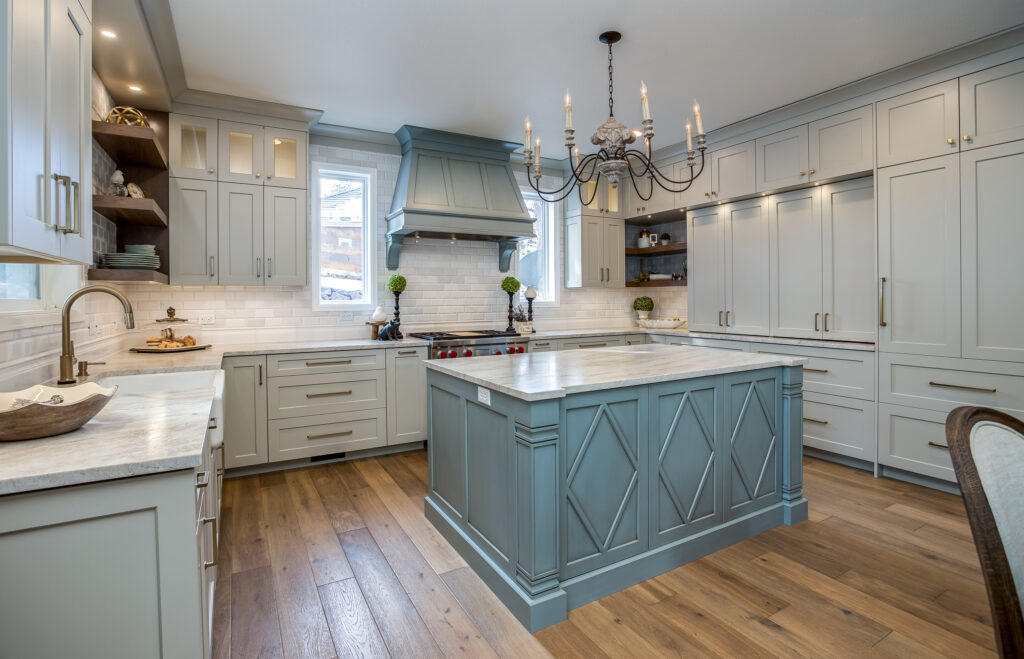
Range Hood Aesthetics
Range hoods come in an almost limitless array of shapes, styles and design features. Range hoods can serve as a focal point of a kitchen or can be hidden away depending on the aesthetic that you want to achieve in your dream kitchen.
The two main types of range hoods are one-piece or two pieces. One-piece range hoods feature a fan inside the hood and a visible exterior shell. One-piece hoods are more commonplace than two-piece counterparts.
Two-piece hoods can offer more flexibility, enabling a custom design based on the power of your range and lifestyle. Two-piece models are especially attractive to homeowners in Colorado that need a more powerful fan that can match a shell that enhances the look and feel of the kitchen. Two-piece hoods can be customized to meet exact needs, wants and performance requirements.
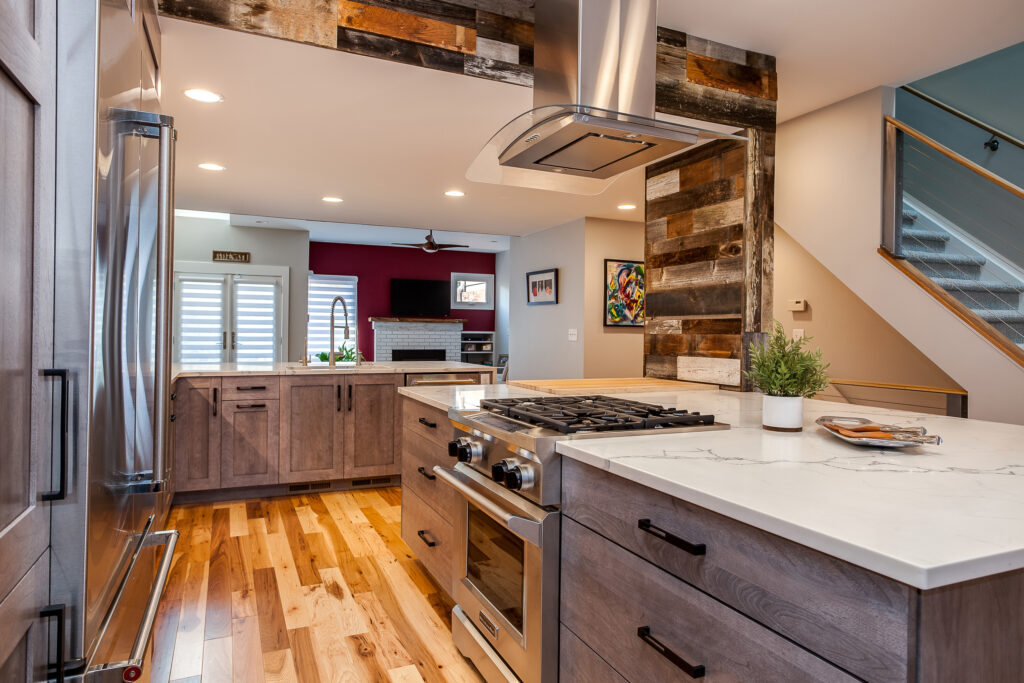
The material selected for the range hood will affect the ease of cleaning and maintenance. Stainless steel is easier to clean than wood, tile or other finishes. Glass components will require more frequent cleaning.
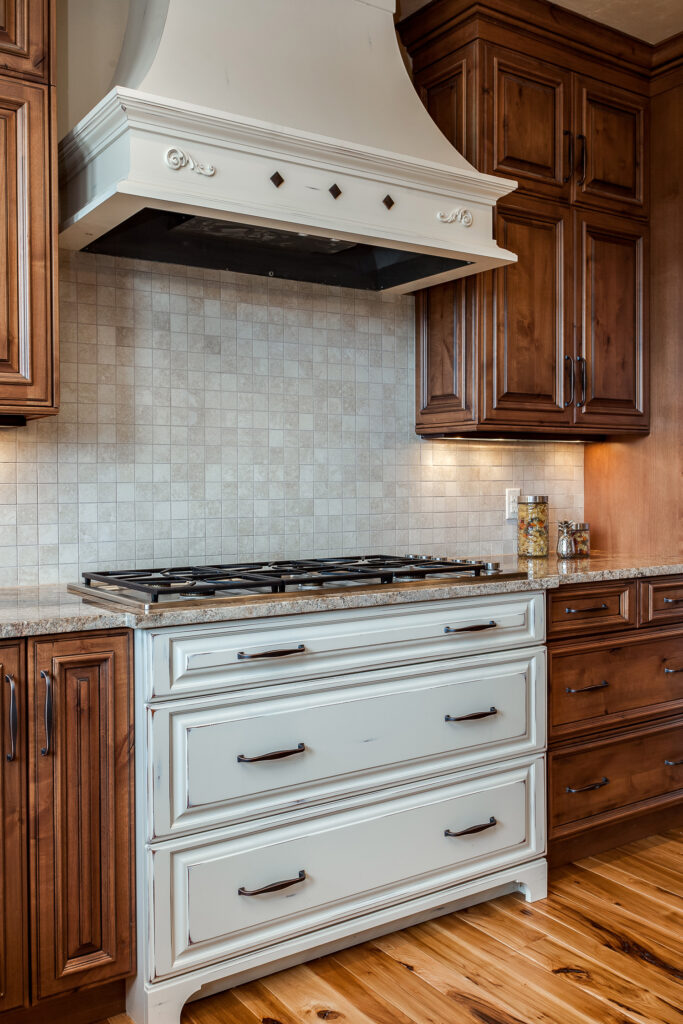
What’s the right range hood for your new kitchen? Give us a call or arrange for a virtual or in-person design consultation by contacting us here, and we can review the perfect combination of form and function.

